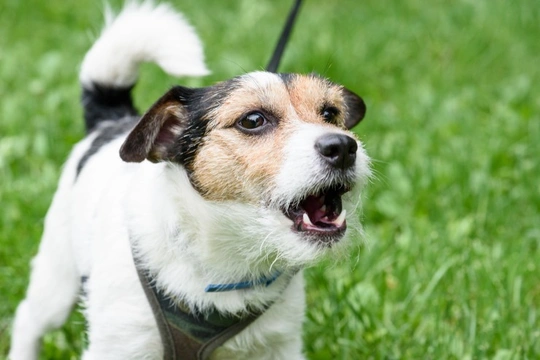
Dogs and the language of growling: Interpreting the meaning
When it comes to dogs, many people (including many dog owners) view growling as a total taboo, something that a well behaved dog will never under any circumstances do. This is largely because most people associated growling with aggression and a pending bite or attack, and it is certainly worth bearing this in mind, because a bite rarely happens without warning-but there are many other reasons for growling too, not all of which are bad!
Learning to understand what your dog means when they growl involves developing an understanding of how to read both your dog, and the situation that is facing them at the time-and the fact that a growl is deep, distinctive and ominous in tone does of course put us on the alert for danger.
However, for your average domestic dog that is well trained and socialised in the main part, when you do hear them growl, the chances of this indicating actual aggression are not that high, unless they are being provoked. Additionally, many people think that growling should be outright forbidden and the dog told off, regardless of context-but this in itself can be a problem because your dog’s angry growl is a warning of “back off or I may attack.” The alternative to this from a dog that has learnt never to growl is that they will give no warning, and simply attack.
In this article, we will look at the different meanings of dog growling, and how to tell what your dog is trying to say when they are growling. Read on to learn more.
Aggression
It is important that all dog owners are aware of the potential for growling to be aggressive-after all, if in doubt it is wise to err on the side of caution. However it is also a good idea to bear in mind that aggressive growling is unusual, and usually only presents within set situations such as if a dog feels cornered, is being bullied or harmed, or cannot get away from a situation and instead will be forced to defend themselves.
Aggressive growling will be accompanied by threat-mode body language too, including wide eyes, a still tail and raised hackles.
Frustration
Say your dog is playing with another dog, and they simply can’t keep up with them, or the other dog keeps running off with the best toy and won’t share. Such situations are apt to lead to frustration, which needs an outlet in dogs just as it does in people. For dogs, this may mean growling-this is not a type of threat, but more a way to ease their pent-up frustrations.
You may also hear frustration growling if you are preparing a delicious roast dinner on the counters just above your dog and keep passing wonderful-smelling food over their head without sharing! This is likely to be a low, rumbling growl that a dog makes to itself, rather than at you!
Defensiveness
A dog that does not want to be touched or does not want to play with another dog will do everything that they can to diffuse the situation and get away, and may often growl in this situation as a warning to give them some space.
It is really important that dogs be allowed to express this and not be punished for growling that is meant as a plea rather than a threat, because if they are taught not to growl in this situation, the first sign of a problem might be a bite.
Fear
A frightened dog can potentially be very dangerous, and so applying the same rules that you would regarding caution around an aggressive dog is very wise. Fear growling indicates distress and confusion, and can easily escalate to a bite or attack. In this type of situation, working to resolve the problem that your dog is afraid of, or calming the dog to find it less threatening is the best approach.
Play and mimicry
Dogs will often growl as part of play and socialisation with others, and this is one situation in which knowing the difference between play and aggression is vital, otherwise continually intervening to remove the dog or tell them off will actually affect the ways in which they will play and interact with others, and make socialisation frustrating and stressful.
As part of play, dogs love to joke around with each other and make mock threats, often whilst offering up role-reversal such as rough and tumble, or a dominant dog allowing a more submissive dog to wrestle with them or take their toys as part of the game.
Affection and happiness
Dogs also sometimes growl in affection and happiness, which is generally a closed-mouth grunting or grumbling sound that might put you in mind of the type of sounds people may make when having a massage or working the kinks out of their back!
All breeds and types of dogs may express pleasure in this way, and most owners read it exactly right, because they know their own dog’s signs and indicators of happiness!



